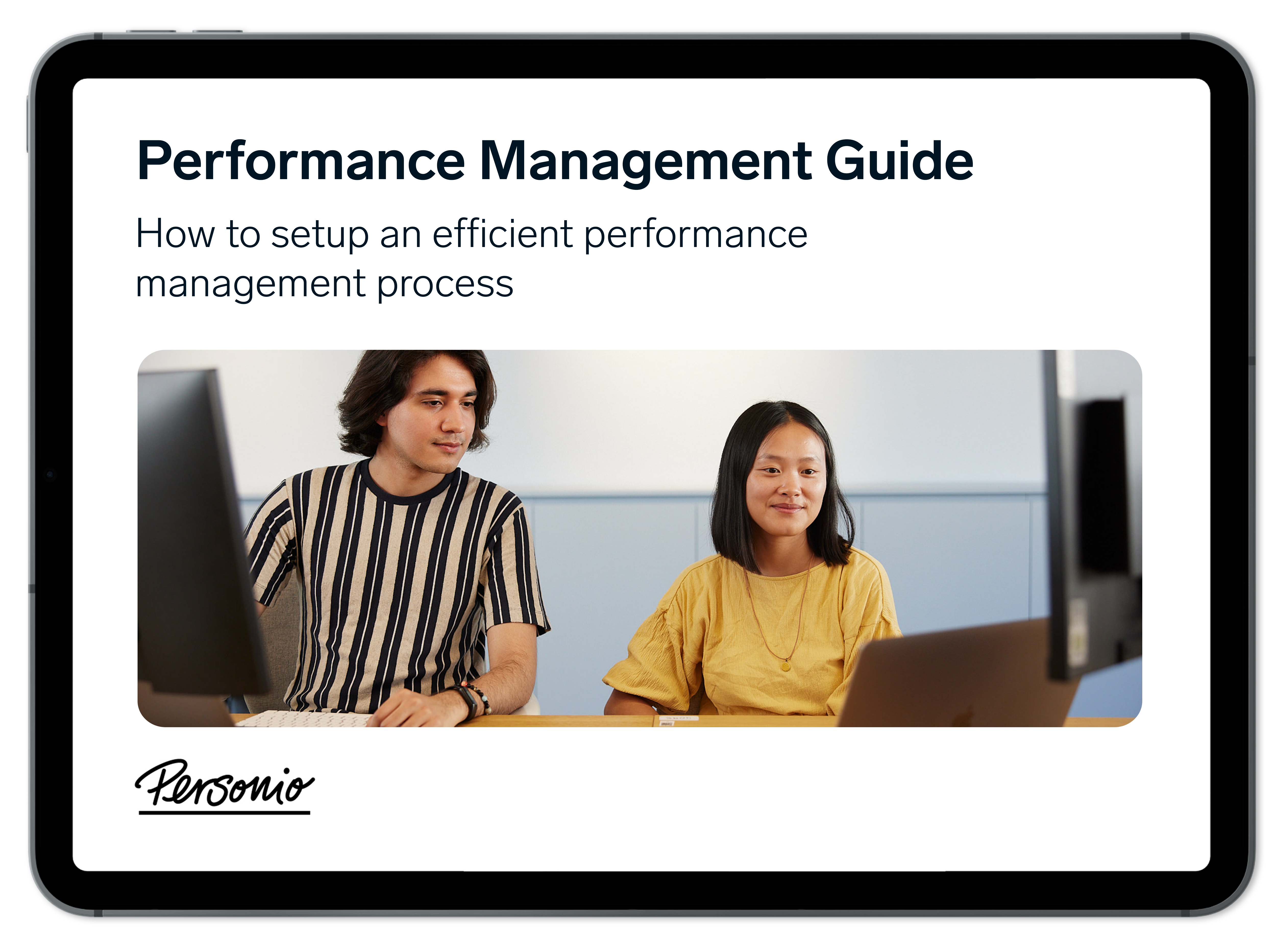HR’s Guide To A First (And Final) Written Warning

In this article, we will help you define written warnings, offer a helpful written warning template, and even pull together a guide to make sure you are providing warnings in a compliant fashion.
Avoid warnings by focusing on performance. Download our appraisal template today.Contents
- 1What Is a Written Warning?
- 2Watch: The Great Reset - Act Now to Create the Future of Culture
- 3Understanding The Written Warning Procedure
- 4Do You Really Need A Formal Warning Letter?
- 5A Guide To Employee Warnings
- 6Should You Keep Record of Staff Written Warnings?
- 7Written Warning Template Tips
- 8Written Warning In The Workplace
What Is a Written Warning?
A written warning is used, by an employer and in the form of a document, to warn an employee of their actions in the workplace, general conduct, and the potential consequences if the employee does not remedy their behaviour (with regards to employment).
Separate from performance matters, which are often handled with a performance improvement plan (PIP) or other performance-related processes, a written warning is typically associated with behaviour outside of an employee's day-to-day role.
When Do You Give An Employee A Written Warning?
According to Acas, a written warning is "a formal warning that the employer can give the employee at the end of the disciplinary procedure." (Note: At the end, not the beginning!) This is important because, as part of the disciplinary procedure, a written warning is more of a confirmation of meeting rather than a “notice to appear.”
When Is A Written Warning At Work Required?
Often referred to as an improvement note, a written warning should only be issued after attempts to handle the issue informally. For example, by having a quiet word with the employee about why their behaviour is unacceptable and what they can do to change it.
Watch: The Great Reset - Act Now to Create the Future of Culture
The Great Reset - Act Now to Create the Future of Culture

We need your consent to load this service!
This content is not permitted to load due to trackers that are not disclosed to the visitor.
Why A Warning Letter To An Employee?
A written warning letter is not only an imperative part of the process, but it is also important as a way to clearly outline what has happened, what needs to change, and what will happen if things do not change. It may seem like a formality, but it is anything but that.
Especially in the case of a first written warning, it can serve as an incredibly clear signal to an employee that the organization has a well-founded and understood disciplinary process that has real steps, and potentially very real consequences.
Is There A Written Warning Template?
A written warning will typically be composed of some familiar elements. This would include:
The date of any disciplinary meeting and who was involved.
A formal acknowledgment of written warning being provided.
The duration of said warning and what it covers.
Any support or training that may be undertaken by the employee.
The likely consequence in case of failure to meet these conditions.
When it comes to the key elements of a written warning, this is typically what would be covered in a long-form letter between an employee and HR (or their supervisor).
A Closer Look at Performance Management

What does it take to truly revitalise your performance processes? Download our guide for some help.
Download NowUnderstanding The Written Warning Procedure
The written warning procedure is, in fact, step five of the wider disciplinary procedure process. This is something that should be written into your company's disciplinary policy or guidelines.
The disciplinary procedure, recommended by Acas, is a six-step process that goes as follows:
Understand the options
Follow a fair procedure
Carry out an investigation
Undertake a disciplinary hearing
Decide on the outcome
Follow up after the disciplinary procedure
Depending on the transgression, a written warning can serve as a key element of employee discipline when they are in breach of a company-wide policy. But, the process needs to both be well outlined and understood by everyone.
Do You Really Need A Formal Warning Letter?
A formal warning letter may not only be a good idea, but it may be a necessity when it comes to maintaining proper disciplinary action in the UK. Take, for instance, the Acas Code of Practice on disciplinary and grievance procedures.
Even gov.uk refers companies in the UK to this Code of Practice, so it’s important to familiarize yourself with its contents when considering writing a warning letter to an employee for misconduct or poor performance.
For a more accessible and practical piece of guidance, it is also helpful to take a look at the Acas guide to Discipline and Grievances at work which includes the employee discipline procedure (the 6-step processes listed above), amongst other useful advice.
A Guide To Employee Warnings
What kind of employee warnings might exist when it comes to following the disciplinary procedure, in addition to putting together a proper written warning. We might want to consider:
Warning letter to employee for misconduct
Warning letter to employee for poor performance
Both of these cases are very serious, which is why they require a formal disciplinary procedure in the first place. After all, whether an employee is exhibiting gross misconduct, or is simply faltering in their role, it benefits everyone to have it on record.
That said, as we mentioned before, this is likely after attempts to prevent a written, formal warning have been attempted and dismissed as ineffective. Employee written warnings need to be warranted, which is again why a policy is so necessary.
What Is the Difference Between a First Written Warning and a Final Written Warning?
As you might expect, a first written warning is the first formal, written step towards dismissal. It should only be issued once you have confirmed that misconduct or poor performance is taking/has taken place.
If the employee repeats or commits another misconduct or doesn’t improve performance within a set time frame the employer can then give a final written warning which must explicitly warn the employee that if they might be dismissed if they don’t meet the requirements of the final written warning.
How Long Should An Employee Warning Notice Be?
There is no need to turn your written warning into an essay about an employee’s failings. Instead, it needs to be a quick report on the facts of the matter. When the meeting occurred, who was there, what was discussed, and what steps need to be taken.
In fact, it is very important to keep things streamlined and to report only the facts. This isn’t like keeping minutes, rather a summation of everything that can have a real effect on an employee’s role and future employment.
Do You Always Need A Written Warning?
In cases of serious misconduct or poor performance, for example, where the employee’s actions have, or could, cause serious harm to the business, you don’t always need to issue an employee warning notice or first written warning.
In this case, dismissing the employee or taking other disciplinary or legal action against them may be appropriate. If their action is also against the law they should also be reported to the police. You can report fraud and cybercrime to the National Business Crime Centre as well as suspicious online behaviour, online hate, or bullying crime.
Should You Keep Record of Staff Written Warnings?
Every company should have its disciplinary process documented. Both managers and employees must know about this process, any relevant disciplinary procedures or documentation, and where to find this information. In addition, even though most of us would rather forget it ever happened, it is also necessary and important to document each stage of a disciplinary procedure!
Checklist: Ensure a seamless offboarding

Don't let departures damage your reputation, and ensure smoother employee exits with our structured offboarding checklist. Download it today.
Download The Checklist NowWritten Warning Template Tips
Employee discipline is hardly an enjoyable process for those involved. Therefore, it is important to know how and when to issue a warning letter to an employee for poor performance or misconduct.
Here are six helpful tips for producing a written warning:
There is no specific process you must go through to dismiss an employee, according to UK law, as long as you do it fairly. However, it is wise to follow a process like the one that Acas has documented.
If you are following the Acas process, only send a written warning letter to an employee once the other four steps have been taken (specifically: Understand the options; follow a fair procedure; carry out an investigation and undertake a disciplinary hearing).
When you do issue a written warning, include all the relevant information in the letter.
For examples of a written warning letter take a look at the Acas disciplinary outcome letter templates. These include – notice of disciplinary warning (first written warning) and notice of disciplinary outcome letters (dismissal or no action).
Be aware that employees can be dismissed for gross misconduct (including things like theft, physical violence, gross negligence, or serious insubordination). If this can be proven then a different set of procedures apply.
You can find an example of a written warning template from ABDO here (the Association of British Dispensing Opticians).
While an employer has the right to dismiss an employee if they are:
Incapable of doing their job to the required standard
They are capable, but unwilling to do their job properly
If they have committed some form of misconduct
Written Warning In The Workplace
Overall, dismissals are a painful and time-consuming process, and putting together a formal written warning is not so different.
If in doubt, have a conversation with an errant employee first. Sometimes employers and employees can agree that it is time to part ways without the arduous process of going through a disciplinary process. This means that it won’t be necessary to write a written warning letter at all.
But, it also helps to have a policy in place and to have all your employees recognise it. There is where a proper document management software can help. We can help by booking a demo with Personio today.
Disclaimer
We would like to inform you that the contents of our website (including any legal contributions) are for non-binding informational purposes only and does not in any way constitute legal advice. The content of this information cannot and is not intended to replace individual and binding legal advice from e.g. a lawyer that addresses your specific situation. In this respect, all information provided is without guarantee of correctness, completeness and up-to-dateness.

